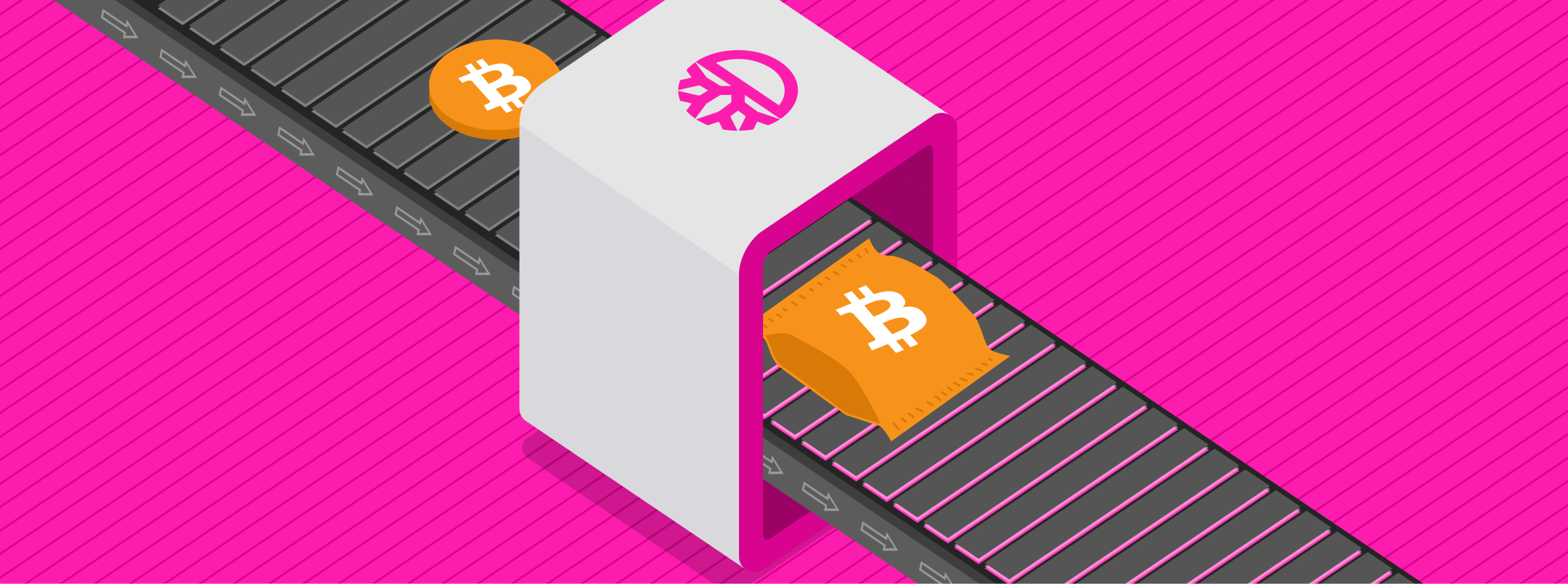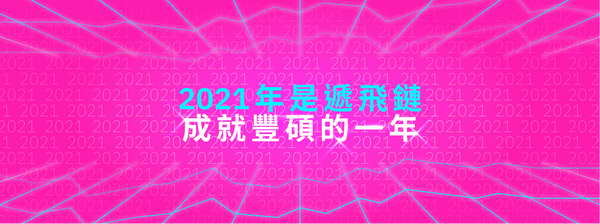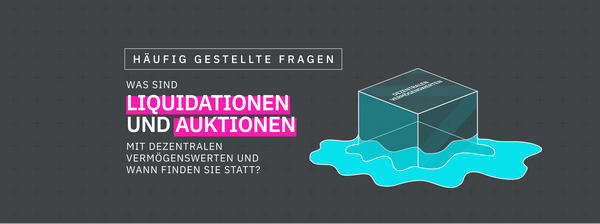How Crypto Assets Are Guaranteed on DeFiChain
In this five minute reading article, you’ll learn about:
- How DeFiChain currently handles the transfer of Bitcoins and other coins into its ecosystem.
- The future of sending Bitcoins and any other coins in a totally decentralized way into the DeFiChain ecosystem.
Have you ever wondered why it is not possible to use Bitcoin directly on Ethereum, or why you can’t send Tether from your DeFiChain Wallet App directly to your Binance account? Well, the answer has to do with each coin's limited interoperability on different non-native blockchains, where coins based on one network cannot be simply transferred to another network. Wrapped tokens are a remedy to circumvent this limitation to be able to use non-native tokens on multiple different blockchains.

What Are Wrapped Tokens?
A wrapped token is a tokenized version of another cryptocurrency which is pegged to the value of the identical asset it represents on a different network and can be redeemed for the unwrapped version of the token at any point in time. In the case of DeFiChain, this means that cryptocurrencies native to a blockchain other than DeFiChain have to be wrapped in order to represent it’s identical ‘genetic copy’ and facilitate trading on DeFiChain’s decentralized exchange.
Another way to think about a wrapped token is to compare it to a stablecoin, which derives its value from another asset. In the case of a stablecoin like USDT, it’s the US-Dollar’s value that it is pegged to. As blockchains are distinct systems, it is actually quite hard to easily share and move information between them. As a result, wrapped tokens increase the interoperability between different blockchains, allowing them to bridge other blockchain ecosystems by becoming a cross-chain asset.
How do Wrapped Tokens Work?
The wrapped token is backed 1:1 with the actual asset. DeFiChain is no exception here — BTC, ETH, LTC, BCH and DOGE are all wrapped versions of the respective real assets and are 1:1 backed by the real assets on the mainnets of the respective blockchains on verifibale addresses.

Whenever you send i.e. Bitcoin via Cake DeFi to your DeFiChain Wallet App, it then gets wrapped into a DAT version of BTC and the real BTCs are transferred to a separate Bitcoin wallet on the Bitcoin blockchain (address: 38pZuWUti3vSQuvuFYs8Lwbyje8cmaGhrT). These Bitcoins will stay and “wait” there for you until you decide to send your Bitcoins back to Cake DeFi. At that point, your wrapped BTC are unwrapped into real BTC, which then can be transferred out to any BTC wallet address.
The same holds true for all other coins, except DeFiChain’s native DFI token. The following list shows you the addresses used to store the real asset tokens:
- BTC: 38pZuWUti3vSQuvuFYs8Lwbyje8cmaGhrT
- ETH: 0x94fa70d079d76279e1815ce403e9b985bccc82ac
- USDT: 0x94fa70d079d76279e1815ce403e9b985bccc82ac
- LTC: MLYQxJfnUfVqRwfYXjDJfmLbyA77hqzSXE
- BCH: 38wFczGqaaGLRub2U7CWeWkMuPDwhMVMRf
- DOGE: D7jrXDgPYck8jL9eYvRrc7Ze8n2e2Loyba
On the other hand, when you exit the DeFiChain ecosystem by i.e. sending your wrapped BTC from the DeFiChain Wallet App back to Cake DeFi, then the wrapped DAT BTC are taken out of circulation. As a result those tokens, which are not backed by a real asset any longer, will get burned. The burning address used is basically just an ordinary DeFiChain address without a private key.
In Table 1 you can see the amounts each respective wallet is currently holding (as of 9 May 2021). The ‘Real Asset’ column shows you the real assets which are locked away on Bitcoin, Ethereum etc. addresses. The ‘Wrapped Asset’ column represents the wrapped token amount for each DAT that has been minted so far (https://dex.defichain.com/mainnet/token).
The ‘Burned Asset” column shows all the wrapped tokens that have been burned so far. These tokens have to be subtracted from the wrapped token amount that has been minted — this is shown in the ‘Total Wrapped Asset’ column. It is crucial to understand that the amount of real assets always equals or exceeds the total amount of wrapped assets. In other words, there cannot ever be more wrapped tokens of any coin in existence than what is locked away as real assets on Bitcoin, Ethereum etc. addresses.
In case the real assets succeed the total wrapped assets, the wrapped tokens then become over-collateralized, which is shown in the last column ‘Delta’. You can check the DAT distribution for each token on this third party website.
No Need of a Custodian Anymore
The future of DeFiChain will be even more decentralized by implementing atomic swaps. Atomic Swaps are smart contracts which facilitate the trustless and decentralized exchange of cryptocurrencies between two distinct blockchains without having to place reliance on any intermediaries.
With the implementation of atomic swaps, DeFiChain users are then able to exchange bitcoin, sitting on the DeFiChain blockchain in the form of DBTC (DeFi Asset Token backed by bitcoin), for bitcoins, sitting on the Bitcoin blockchain, without relying on any middlemen or centralized institution. Instead, users will be able to intuitively transfer coins in a completely decentralized manner to and from the Bitcoin blockchain directly in the DeFiChain app. This opens up the possibility of allowing all assets on DeFiChain to be easily moved into and out of the DeFiChain blockchain and the Bitcoin blockchain with high liquidity.
With the implementation of atomic swaps the times you had to go via Cake DeFi are numbered, and true decentralization will enrich your trading experience. Atomic swaps will work for any token, not only BTC.
Decentralized Token Creation For Anyone
DeFiChain’s decentralization and interoperability ambitions do not stop with atomic swaps. In a second phase, the possibility to create a DeFi Asset Token (DAT) is going to be implemented. As a result, anyone can then create a token and mark the token as an official token by their own organization. The decentralized token creation is done via over-collateralization, meaning all tokens, including but not limited to BTC, ETH, USDT, can be created by anyone in the community via over-collateralizing with DFI, BTC and a few others.
On top of that, the organization is then also able to appoint pricing oracles, which are essentially smart contracts on DeFiChain, allowing multiple trusted and appointed parties to submit periodic price feeds of DATs and DFI.
Summary
Getting Bitcoins or Ether onto your DeFiChain Wallet App is currently time-consuming and not really frictionless. Any transfer of any coin other than DFI has to currently go via Cake DeFi and is backed by the real assets on the mainnets of the respective blockchains. That means, for each BTC you send into the DeFiChain ecosystem, the same amount is put into a backing address on the bitcoin blockchain. If you were to exit the DeFiChain ecosystem, then these wrapped Bitcoins would get destroyed.
In the near future this procedure will get more straightforward and intuitive by implementing atomic swaps. It is then possible to allow all assets on DeFiChain to be easily moved into and out of the DeFiChain blockchain and the Bitcoin blockchain with high liquidity without going via a middleman like Cake DeFi.
True decentralization is on the horizon and #nativedefi on DeFiChain will soon be the gold standard for any DeFi project out there.
If you are interested in the project and would like to keep up with the latest news and updates on DeFiChain, then join the official Reddit, Telegram and Twitter channels.





